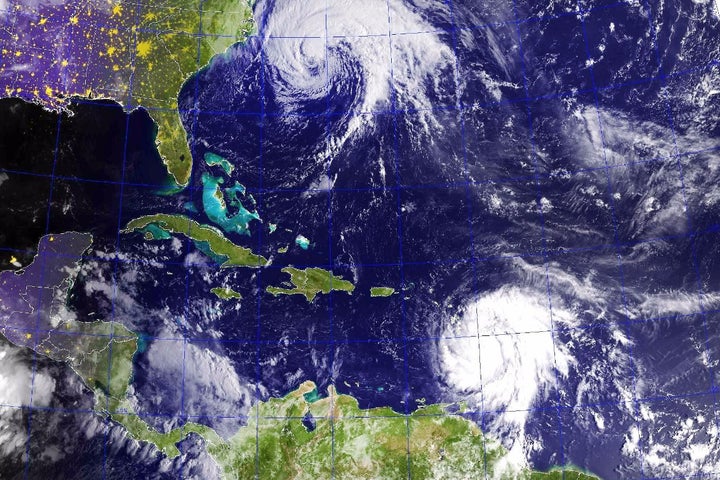
This year’s hurricane season has shown that climate change in the 21st century is here, with record-breaking extreme weather, climate denying politicians, major cities and islands under water, and the brunt of the impact on low income communities and people of color.
Following two horrible, climate-change-driven hurricanes Irma and Maria, Puerto Rico is facing a humanitarian crisis. Millions of people are without clean water, electricity, walls on some of their houses, passable roads, and many of the basic essentials we take for granted in advanced developed countries. We were given a peek at this type of climate-change-caused dystopia when Hurricane Katrina struck New Orleans ten years ago. Unlike the scant coverage given to such events occurring elsewhere around the world, news from Puerto Rico, as a US territory and home to relatives of millions of American citizens on the mainland, may break through to American audiences.
The recovery effort has an opportunity to do more than just rebuild the fossil-fuel based infrastructure. It can (and must) transform the affected areas into models for a future low-carbon economy. Of course, we must first focus on the immediate humanitarian needs of people in need, but very soon after that disaster recovery funds must be allocated to help Puerto Rico stop burning oil for electricity. Imported oil is an expensive and a dirty source of energy, and is contributing to the island’s economic problems.
Money used to rebuild with renewable energy will help Puerto Rico’s economy by reducing the amount of money sent out of the state to import oil and diesel. Puerto Rico already has renewable energy mandates that it was struggling to meet. Their bankrupt utility PREPA provides less than 2% renewable energy on the island, well below the island’s goals of 12% renewables by the end of 2015, 15% by 2020 and 20% by 2035.
At the current price of 24-27 cents per kilowatt-hour for conventional power, solar is cost-effective. PREPA could buy the power at $0.13/kwh from private companies using Power Purchase Agreements (PPAs). Disaster relief should be budgeted so that every rebuilt house has solar hot water. Rooftop solar PV sized to meet the load of the building it’s on would avoid long transmission lines from centralized generators, and would make the island more resilient in advance of the next hurricane. A strong push for renewables would become a source of green jobs and economic development.
But looming over the whole situation is Puerto Rico’s debt and the question of debt relief. Politicians and the media often take a judgmental tone in reporting debt and bankruptcy issues, with the implication that if you’re in debt, you are a bad person (or city, territory, or country). But this is incorrect, because the world’s monetary systems are based on debt. Most of the money in circulation, including the money in your wallet, was created when a bank issued a loan. But the money to repay the interest on that loan was never created, so for the system to work, a certain number of people, countries, and territories are fated to default. Truly solving this issue would require substantial monetary reform. Puerto Rico’s debt-ridden government is not sovereign and cannot issue their own currency or devalue it to help their exporting industries. So that will have to wait for another day. In the meantime, a managed default, whereby creditors take a “haircut” would free up resources to invest in a more renewable future.
There are some similarities to the economic issues facing Greece as it was trying to negotiate its debt with the European Union. In the EU’s case, creditor countries such as Germany imposed austerity budgets, cutting government spending on public services and social benefits, based on incorrect metaphor that governments should be held to the same pocketbook limits as households. By contrast, a stimulus perspective would focus on rebuilding infrastructure and providing a stable future for households through policies such as quantitative easing for the people. Greek Finance Minister Yanis Varoufakis came out of those failed talks with bold ideas for democratization and political reform of the EU. For Puerto Rico, the corollary would be to fix their historic lack of democratic representation in Congress by creating the 51st state (or 52nd, if they followed the District of Columbia).
Climate disasters are going to be a fact of life in the 21st century. Luckily, we know what is needed for a sustainable and resilient rebuilding. The first ingredient is basic humanity, then add in some renewable energy and debt forgiveness, and season with political representation and democracy.
Author’s note: As this article was being finalized, Bloomberg published an editorial making some similar points. Their title may be even better than mine: “How to Get Power to the People of Puerto Rico.”
